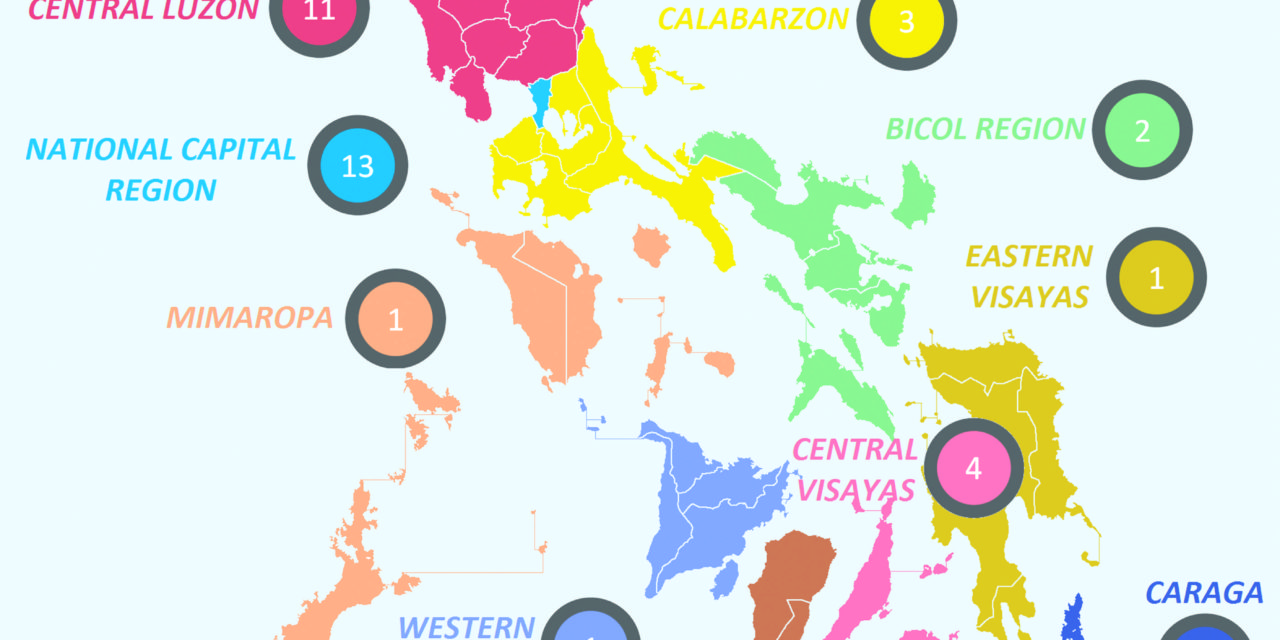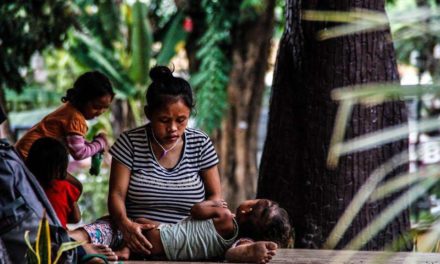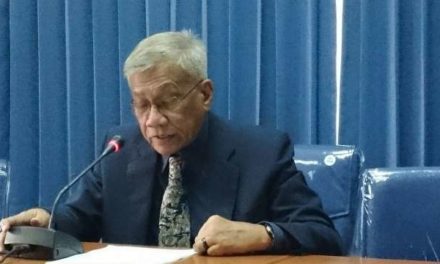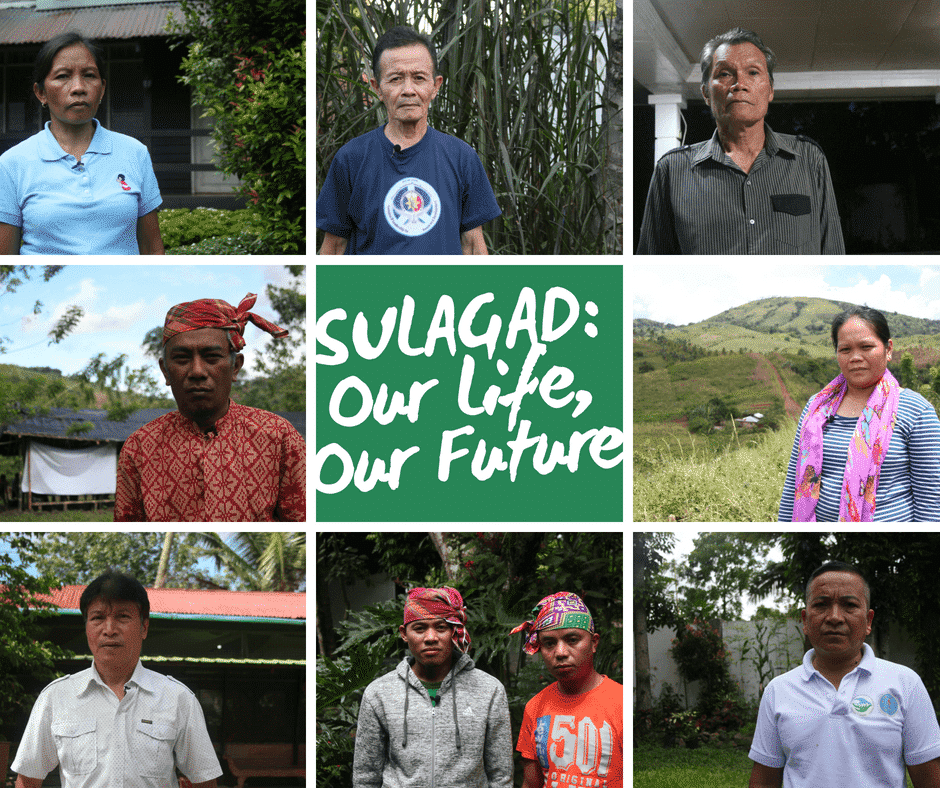By Mary Ann Manahan
The Duterte administration heralds the next five years as the “Golden Age of Infrastructure.” Infrastructure development is envisaged to support the three pillars of the 2017-2022 Philippine Development Plan (PDP), namely malasakit (enhancing social fabric), pagbabago (inequality-reducing transformation), and patuloy na pag-unlad (ensuring growth potential). The country lags behind in Southeast Asia in terms of infrastructure quality and spending. As a bold move, the Duterte administration commits to boost public spending for infrastructure from the current 5.1 percent to 7.4 percent of gross domestic product by end of his term.[1] Further strengthening the commitment is the creation of an infrastructure cluster headed by Secretary Carlos Dominguez III of the Department of Finance to lead this initiative.
During the first quarter of 2017, Duterte’s economic managers unveiled the $160 billion or 8.2 trillion infrastructure plan before foreign investors and the Filipino business community. Build, Build, Build[2] (BBB) is coordinated by the country’s major infrastructure agencies, namely the Department of Transportation (DoTr), Department of Public Works and Highway (DPWH), Bases Conversion Development Agency (BCDA), and the National Economic and Development Agency (NEDA). The administration claims that having these agencies coordinate is to be a historical first. Based on government’s data, about 61 projects[3] worth 1.7 trillion[4], which are in various stages of project development and implementation, are included in the initial list.
The government sees infrastructure development as the solution to job generation, transportation and traffic woes, and high prices of goods and services. According to the International Labor Organization’s estimate for developing countries, for every $1 billion spent on infrastructure, about 200,000 direct jobs are created, which certainly forms part of the government’s strategy for unemployment rate reduction of 3-5 percent or six million new jobs by 2022.[5]
Three Components
The Duterte administration hopes to attract more investments into the country by focusing on three components: (1) building more railways, urban mass transport, airports and seaports, (2) more bridges and roads, and (3) new and better cities. These components underpin the PDP’s National Spatial Strategy (NSS), which recognizes the role and comparative advantages of cities as engines of economic growth, poverty reduction, and infrastructure development “to provide efficient connective networks of sustainable urban and rural communities.”[6] The NSS is a strategy discussed and adopted among the country’s technocrats during the tail end of former President Benigno Aquino III’s government and has found its way as a key framework under the President Duterte’s PDP.
Under BBB, DoTr will implement more than half of the infrastructure projects worth 1.17 billion. DPWH will handle 15 projects with an estimated cost of over 276 billion, while BCDA will implement 11 projects, which are new cities or special economic zones (SEZs) which would cost 317 billion. Figure 1 shows that 29.5 percent or 18 projects have been earmarked for improvement or building of new airports. This will be followed by building of roads and bridges, almost 20 percent or 12 projects in total. About 11 new railway projects will be constructed that are mostly carry-over from the previous government of Benigno Aquino III. The top five most expensive infrastructure projects are all railways; the Mega Manila Subway estimated at 227 billion would be the top project. The subway will be a 25-kilometer underground mass transportation system that will connect major business districts and government centers in the capital and is expected to serve about 370,000 passengers per day.
Addressing the infrastructure deficit of the country has been a major demand of different sections of Philippine society. Almost every Filipino has argued for more quality roads and bridges, improved airport facilities, and mass transport systems for everyday mobility and to ease people’s lives. Memories of ‘carmaggedon’ along EDSA linger and decongesting major cities is one of the campaign promises of President Duterte. Common sense and economic expertise also dictate that infrastructure have “a multiplier effect to existing industries as well as linkage effect, in the sense that it can spur new enterprises.”[7]
But has President Duterte delivered on his promise? Has the first year laid the foundation to support his PDP’s three pillars of malasakit, pagbabago, and patuloy na pag-unlad?
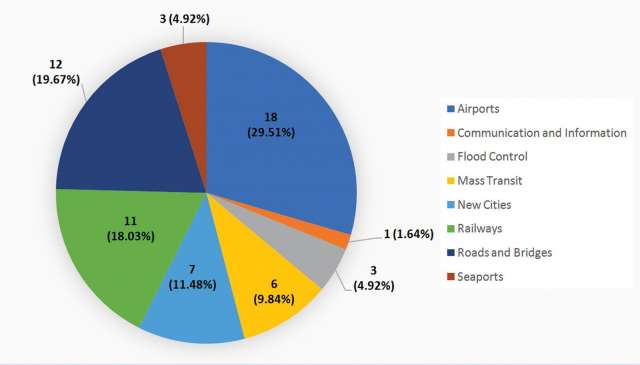
Figure 1: Distribution of Build, Build, Build Projects by Sector
Lion’s Share for ‘Imperial Luzon’
President Duterte promised to expand to the periphery. This would mean focusing on the neglected regions of the Visayas and Mindanao via more public spending and ending the domination of ‘Imperial Manila’ through a shift to federalism. Coupled with his plans to build new SEZs in every nook and cranny of the country, BBB is peddled as a tool to facilitate not only the flow of trades, goods, people, and investments but also spur economic activities and consequently reduce poverty in the periphery.
However, the Duterte administration will follow the same pattern of skewed distribution of public infrastructure projects of the past. Government’s data reveal that ‘Imperial Luzon’, which covers the regions of Metro Manila, Central Luzon, and CALABARZON, where less than 40 percent of the total national population lives, would still be the geographic priority of the infrastructure projects, both in terms of total number and total value/estimated costs. In terms of number, the map below illustrates how Luzon will get a total of 27 projects, while the regions in the Visayas and Mindanao combined will only get 18 projects. Even for projects that will cover inter-regional/multiple regions, majority of them will be in Luzon.
In terms of combined value/costs, Central Luzon leads with 564.45 billion worth of projects, followed by interregional/multi-regional (mostly located in Luzon) for 533.18 billion and Metro Manila accounting for almost 366 billion. Altogether, they comprise 82.9 percent of all infrastructure projects’ costs, which is similar to the previous administration’s infrastructure spending.8 These two regions plus CALABARZON accounted for almost two-thirds of the GDP from 2014-2016, and hence, the historical/current focus (see Table 1). The projects in Central Luzon will involve three railways, six components of Clark Green City, an airport and a road/bridge. Metro Manila gets five mass transit, two railways, four roads and bridges, and two flood control projects. Compared to other infrastructure, railways are most expensive.
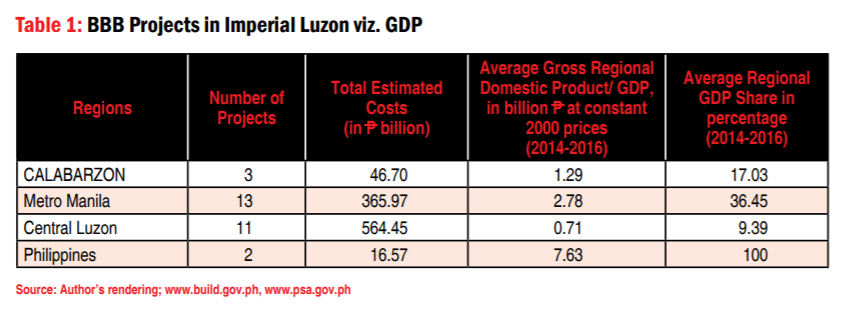
Unfortunately, projects for the Visayas and Mindanao will account for only 12.9 percent of combined costs or 227.644 billion, more than half are to be allocated for airport development, operations, and maintenance. The remaining projects involve mass transit, flood control, road/bridge, and railway (see Table 2).
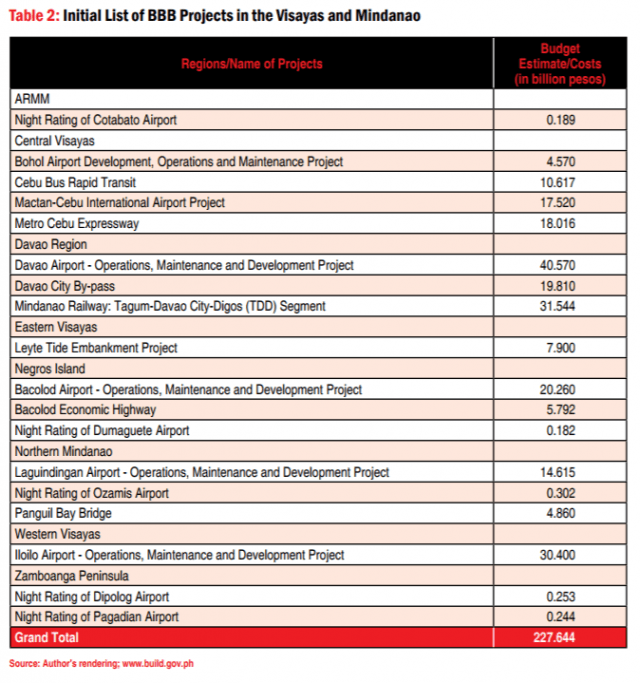
Government Takeover and ‘Hybrid PPP’
What is qualitatively different from the past administrations is the shift from Public-Private Partnerships (PPP) to government spending as the main financing mode. Figure 2 shows that more than half of the projects will be sourced from the General Appropriations Act (GAA) and official development assistance (ODA) including Chinese ODA. The combined value is estimated at 1.1 trillion, 90 percent of which are ODA.
Duterte’s economic managers have criticized PPP as slow in terms of taking off ground. Government has taken over the operation and modernization of five regional airports in Davao, Bacolod, Iloilo, Laguindingan, and Bohol as well as the improvement of Clark International Airport, all of which were included in the PPP list during Aquino’s erm.9 As mentioned above, the current government prefers to source financing from taxes and ODA, especially Chinese ODA. On May 2017, President Duterte made a pitch of the BBB program before global leaders present at the Belt and Road Forum in Beijing, China. He explained that the country’s program can “complement regional and international connectivity mechanisms, such as China’s One Belt One Road (OBOR) initiative and the ASEAN Master Plan on Connectivity.”[10] The Philippines however is not included in OBOR, a multi-trillion-dollar, massive undertaking to build infrastructure networks to connect Asia and Europe, involving around 60 countries. As part of its pivot to China, the government hopes to be part of this initiative.
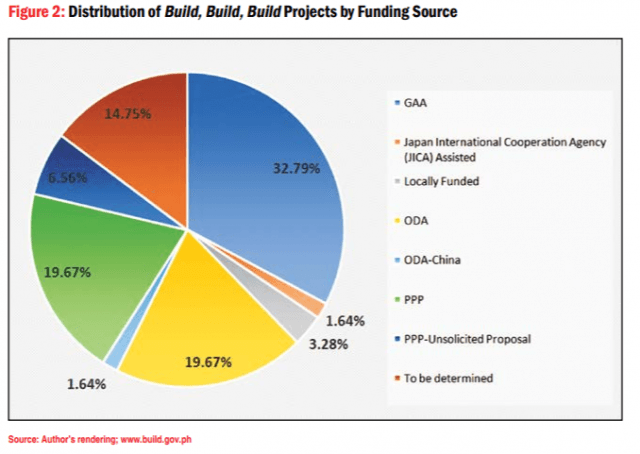
This policy shift has hit the pause button on the battle of Filipino billionaires, particularly on who will bag the $1.5 billion new international airport construction, the subject of unsolicited proposals from the private sector. San Miguel Corporation, Ayala, Metro Pacific Investments Corporation, Aboitiz Equity Ventures, Inc. and Henry Sy’s SM group have all tendered their proposals to the Duterte government. But the government has yet to issue a decision.[11]
The private sector has expressed their concern over what they deem as government takeover, citing that the government is not the best stakeholder to handle infrastructure projects. Based on the PPP Center’s data, 20 projects in the pipeline (MRT Line 6, NAIA PPP Project, North-South Railway Project – South Line – Operations and Maintenance Component, etc.) would be affected by this policy shift.[12] However, Secretary Dominguez has allayed their fears by explaining that a hybrid PPP is underway, which means that government will take the initial steps to jumpstart the construction and “the PPP component will come later when the operations and maintenance of the project are bid out to the private sector”.[13] This is somewhat a reverse Build-Operate-Transfer (BOT), a scheme commonly adopted in infrastructure projects in the country by governments after Marcos, in which the private sector receives a concession or contract from the state or public sector to fund, design, and construct infrastructure projects and then transfers the operation and maintenance back to the state/public entity.
Concerns About BBB
Infrastructure, especially those that promote universal public provision of goods and services, people’s mobility, and a life with dignity are necessary. Government/public spending under BBB is crucial as past experiences have exposed the weaknesses and contract anomalies as well as demystified the non-transparent PPP processes and false promises, all designed to protect corporate profits (e.g. Laguna Lake dredging, NorthRail and Roll-on, Roll-off). These are fundamentally incompatible with ensuring universal access to quality public services (see Duterte’s Social Development Agenda: Radical Change or Business as Usual? on page 37) and protecting the environment.
However, there are concerns about the current state of BBB. One, as mentioned above, Luzon still gets the bigger share of the pie. Second, some of the projects did not follow the usual project cycle and are now ongoing construction, even without accomplishing specific tasks under project procurement or the endorsement of the NEDA Investment Coordinating Committee, the body that reviews all investment projects in the country. Only 25 out of the 61 projects have completed an Environmental Impact Assessment (EIA) and four of them are already being implemented without one. Bypassing processes can generate social and environmental problems.
The proclivity for fast-tracking projects is exemplified by the road heightening and tide embankment project in typhoon Yolanda (Haiyan)-affected communities in Leyte province. The Community of Yolanda Survivors and Partners (CYSP), a consortium of affected communities and NGOs monitoring the government’s recovery and rehabilitation efforts in the Yolanda corridor, has pointed out the project’s threats to the livelihood and survival of the coastal communities, with potential displacement that can exacerbate their existing vulnerabilities. A 2016 study conducted by the Center for Environmental Concerns stated that the said project can lead to the loss of 97 hectares of mangrove forest and wetlands, citing the project’s own EIA.[14] Still, despite these warnings, the project went ahead, with DPWH Region 8 admitting in a public consultation that they had been pressured to produce results by the national government.
Third, the initial projects intend to facilitate the activities of the middle class, more than the poorer sections of Philippine society. This is consistent with AmBisyon 2040, the country’s new long-term vision to become an upper middle-class country. Many of Duterte’s infrastructure projects involve right-of-way, possible displacement of urban poor communities, clearing of lands, and cutting of trees. Infrastructure costs are much higher if socio-environmental impacts are considered.
Finally, the involvement of Chinese ODA and investments raises a red flag. Experiences of Africa, neighboring Southeast Asian countries, and the Philippines have demonstrated the bad practices in terms of corruption (e.g. NBN-ZTE deal), labor rights violation, environmental degradation, and land grabbing by Chinese companies. Therefore, it may not be a surprise if struggles and conflicts around infrastructure projects escalate and intensify in the next five years.
Given these concerns, one could not help but anticipate that the socio-economic and environmental costs of BBB will be borne by those already marginalized and vulnerable, negating Duterte’s promise of malasakit and pagbabago.
——
1 NEDA (2017), Philippine Development Plan 2017-2022, NEDA, Ortigas Center.
2 BBB’s website does not include 33 projects from NEDA’s database, which totals 248.05 billion. NEDA’s database also contains the complete Consolidated Infrastructure Investment Program, which details infrastructure projects by other government agencies.
3 The budget for four projects are yet to be determined. These are BCDA Smart City Solutions, Central Spine RORO Alignment Project, New Clark City-Mixed Use Industrial Real Estate Developments, and New Clark City- Agro-Industrial Park. The last two are part of the Clark Green City initiative which started during Benigno Aquino III’s government.
4 Based on the datasets of PPP and BBB, there is a variance of 7.8 billion in budget estimation, mainly from the PPP projects of DoT and DPWH.
5 NEDA (2017), Philippine Development Plan 2017-2022, NEDA, Ortigas Center.
6 Ibid., p. 36.
7 Comment by James Matthew Milaflor of the Institute of Popular Democracy, posted on the author’s Facebook page. This is response to a crowd sourcing question: “is an aggressive government spending a sound policy as long as it’s done for better infrastructure, job generation and poverty reduction/ public goods objectives, even if it will lead to a fiscal deficit? What’s your take?”
8 Forbes Philippines (2016) “Leader Board: Public Infrastructure, Imperial Regions”, Philippines.
9 Philippine Daily Inquirer (2017), “Unexpected policy shift”, PDI, Editorial.
10 Corrales, N. (2017), “Duterte pushes Build, Build, Build program at Beijing Forum, Philippine Daily Inquirer.
11 Mukharjee, A. (2017), Frustrated in the Philippines, Bloomberg Gadfly, March 28, 2017.
12 “Unexpected policy shift”.
13 Ibid.
14 Center for Environmental Concerns (2016), “Dinhi kami nabubuhi” (We live here), unpublished manuscript, Development and Peace Caritas Canada, Quezon City.

